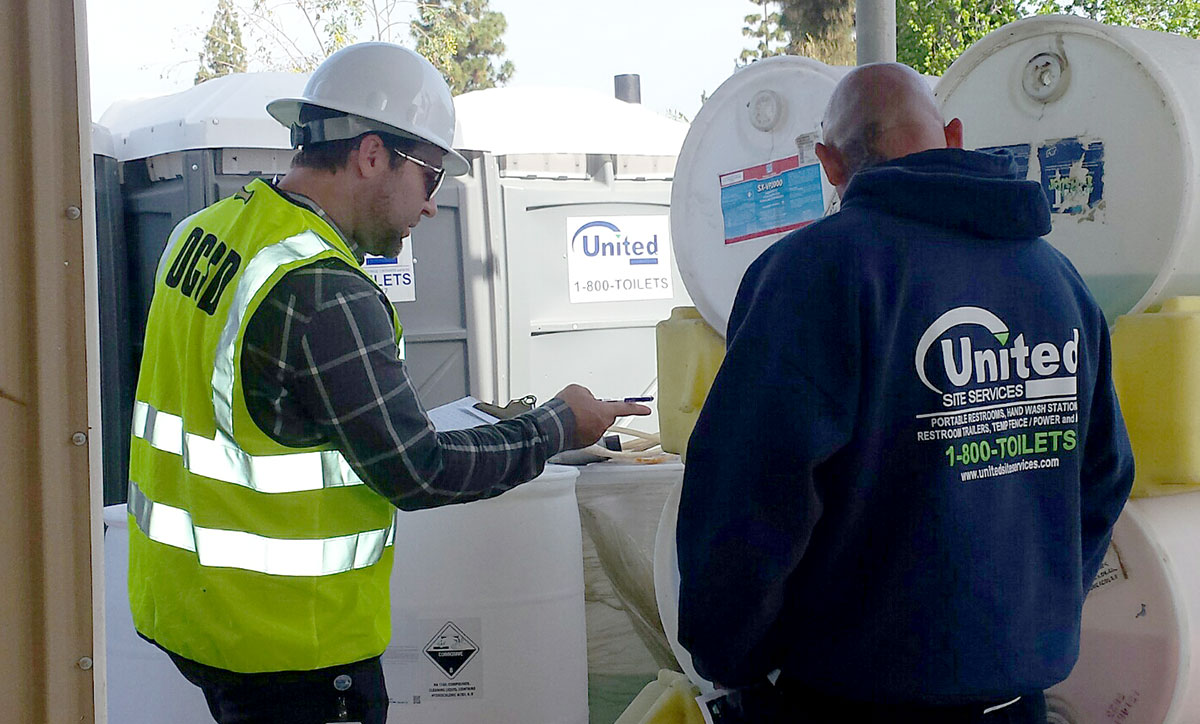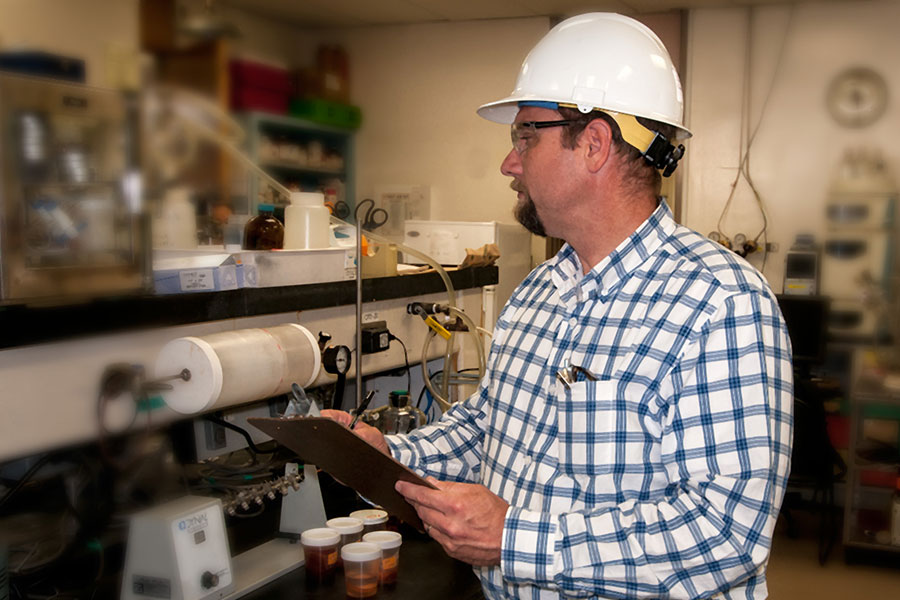
P3S Committee Past Chair Jonathon Powell with OCSan inspects an industrial site.
Be part of the inaugural 2024 Enhanced Source Control Workshop on February 6 at the Delta Hotels in Anaheim. Learn more >
AB 574 requires the State Water Board to develop draft direct potable reuse (DPR) regulations by December 31, 2023.
An expert panel assembled in 2016 by the State Water Board reported that DPR is technically feasible. DPR is reusing water without a groundwater or environmental buffer, so purified water flows much more quickly from the WRRF to the Advanced Water Treatment Facility (AWTF) to the drinking water treatment plant.
The report outlined several areas where further research was needed in order for the State to develop DPR regulations. This included recommendations that more research and regulations be focused on industrial pretreatment inspections and standards, also known as source control. Local wastewater agencies regulate and monitor the flow of wastewater from industrial dischargers within the sewer shed.
The ultimate goal of enhanced source control is to prevent unwanted chemicals and compounds of emerging concern from entering the sewer system and impacting water quality further downstream. The drinking water community uses source control tactics around lakes and rivers that eventually become municipal drinking water supplies.
The National Water Research Institute in Fountain Valley was assigned the enhanced source control research project by the State Water Board and in March 2020 submitted their research report. The advisory panel included Chair: Jeff Neemann, Black & Veatch; James Colston, Irvine Ranch Water District; Stuart Krasner, Independent Consultant; Ian Law, IBL Solutions and University of Queensland; and Amelia Whitson, EPA Region 9. NWRI staff included Kevin Hardy, Executive Director; Mary Collins, Communications Manager; and Suzanne Sharkey, Water Resources Scientist and Project Manager.
“Because the response time between treatment and distribution to consumers may be shorter in the case of DPR projects than for IPR projects, utilities that plan to add DPR to their water supply portfolio need to ensure that their industrial source control program is sufficiently rigorous to safeguard the quality of water it distributes to customers.” – NWRI Enhanced Source Control Expert Panel

P3S Committee member Jason Finn, LACSD, demonstrates proper industrial facility inspection PPE.
A few of the report’s recommendations included:
In 2021 the State Water Board released draft regulations for public comment and has since released updated drafts. Those regs included requirements for enhanced source control.
California’s Title 22 water recycling regulations already cover several requirements for source control.
The draft DPR regulations add additional elements:
The NWRI report includes several case studies about enhanced source control that is part of the Singapore Public Utilities Board’s NEWater Project.
Critical elements to NEWater’s success
• Discharge regulations.
• Regular monitoring and industry inspections.
• Use of analyzers to monitor volatile organic chemicals (VOCs). There are 40 analyzers in the wastewater collection system and 25 at industrial premises.
• Use of 375 pH analyzers installed at industrial premises and connected to lockable valves that are activated if pH is outside the regulated range.
• Use of 42 microbial fuel cells for 24/7 measurement of heavy metals, cyanide, pH, and ORP. Deployment of 100 units at permitted industry sites , with plans to install 100 units in the
wastewater collection system.
• Use of robotics to enter and sample from wastewater collection system when illegal discharges are detected.
• Drone surveillance.
• Ongoing research and development on the use of fluorescence analyzers at nodal points to monitor organics.
The State Water Board Division of Drinking Water staff continues to refine the draft DPR regulations with public input. There are several expert panels working on different aspects of research and will soon provide their final reports. The Water Research Foundation is also wrapping up research projects that will inform DDW’s development of regulations.
The State Water Board should be considering DPR regulations sometime towards the end of 2023.